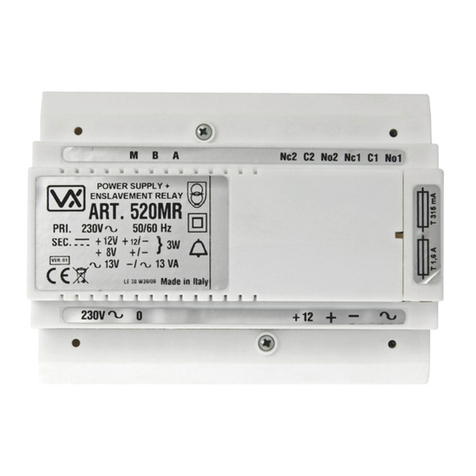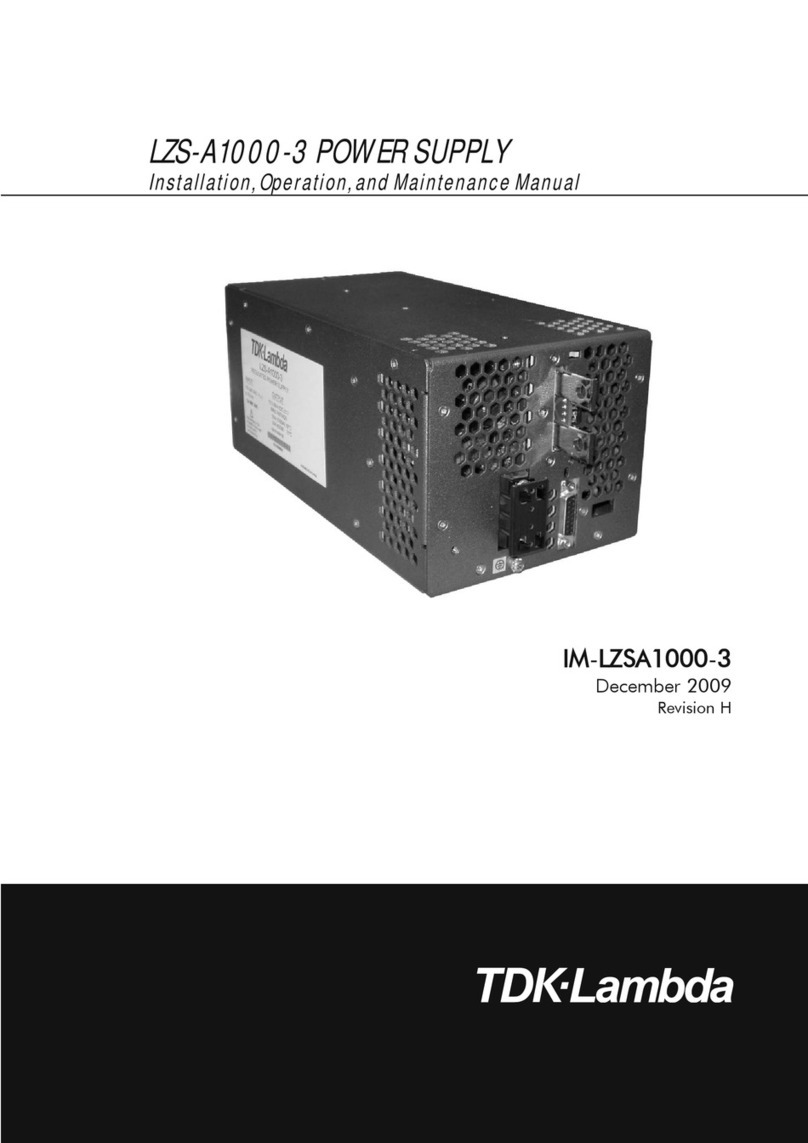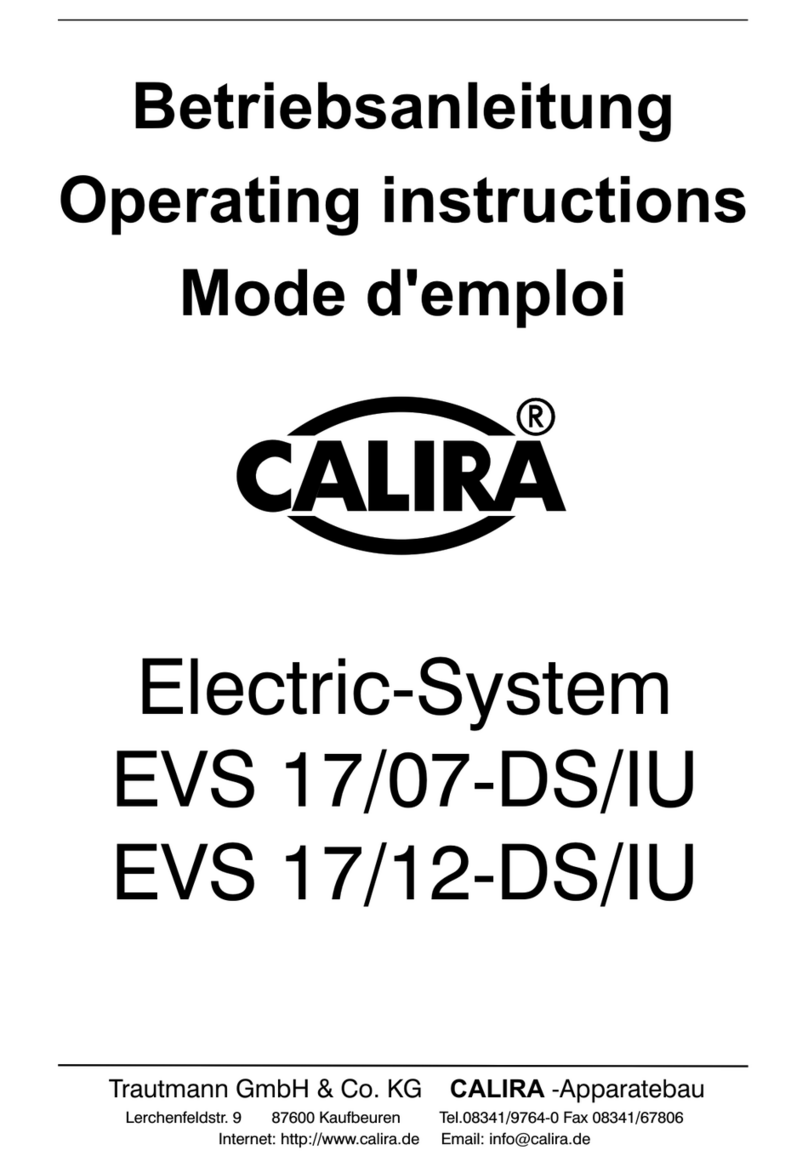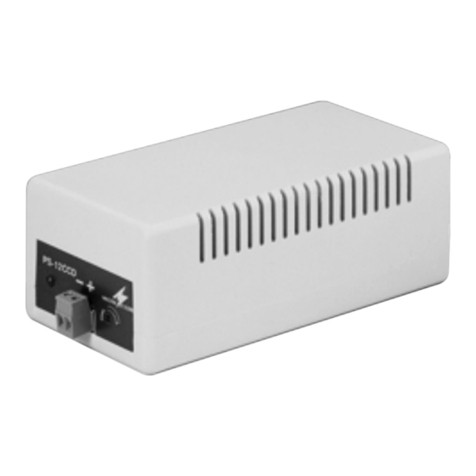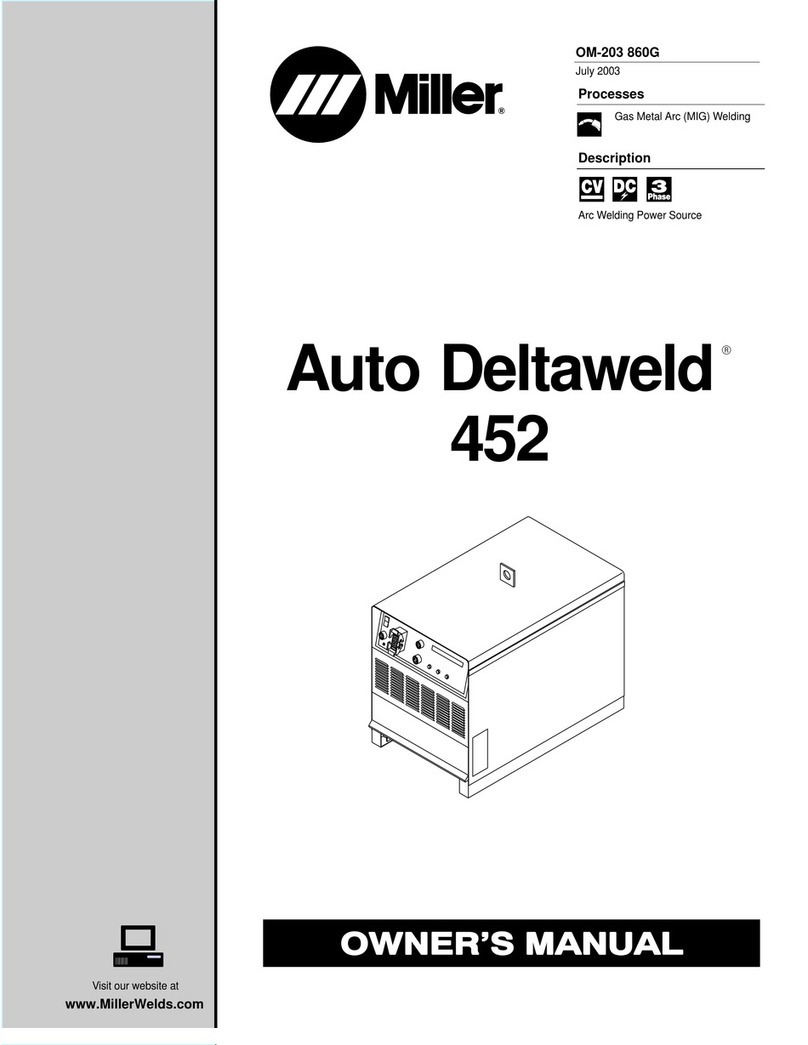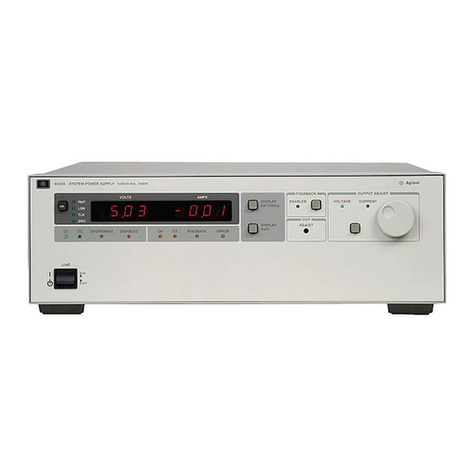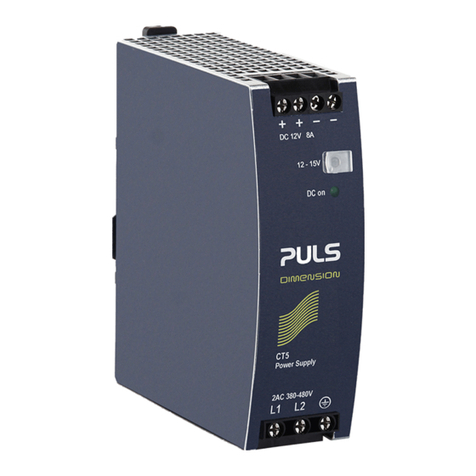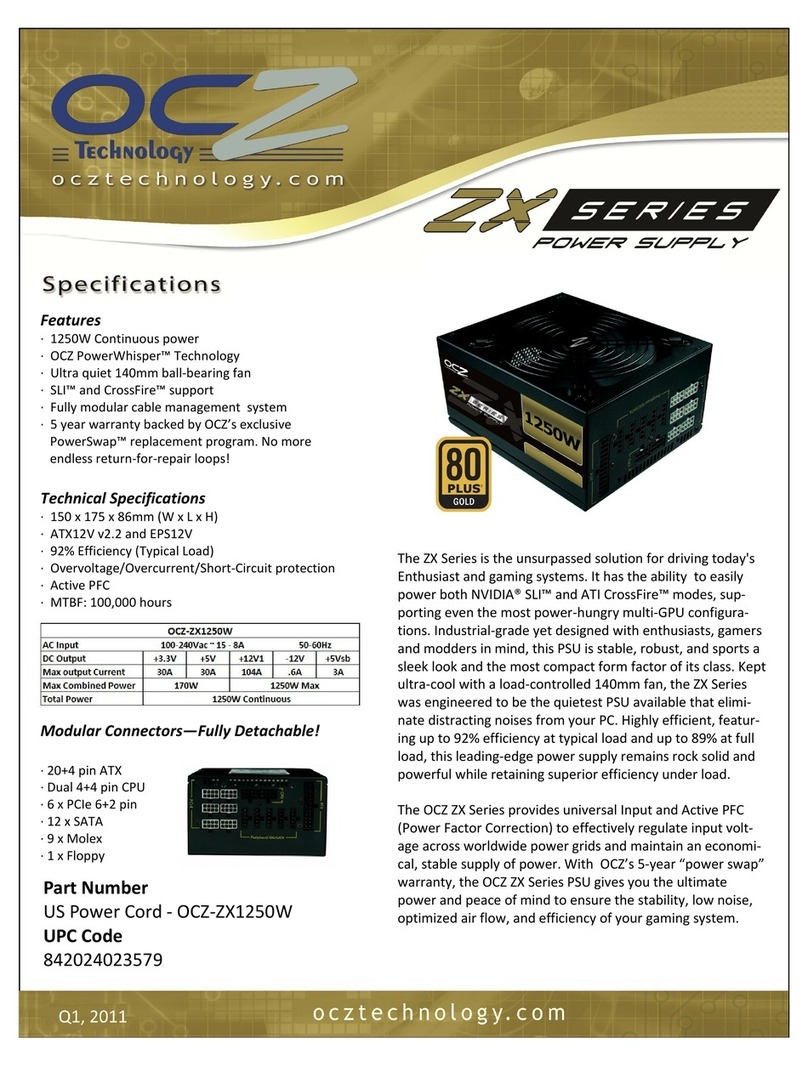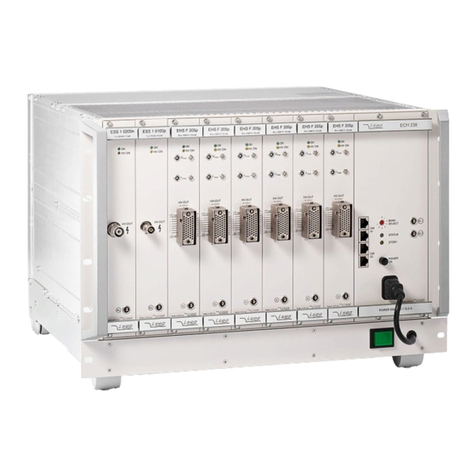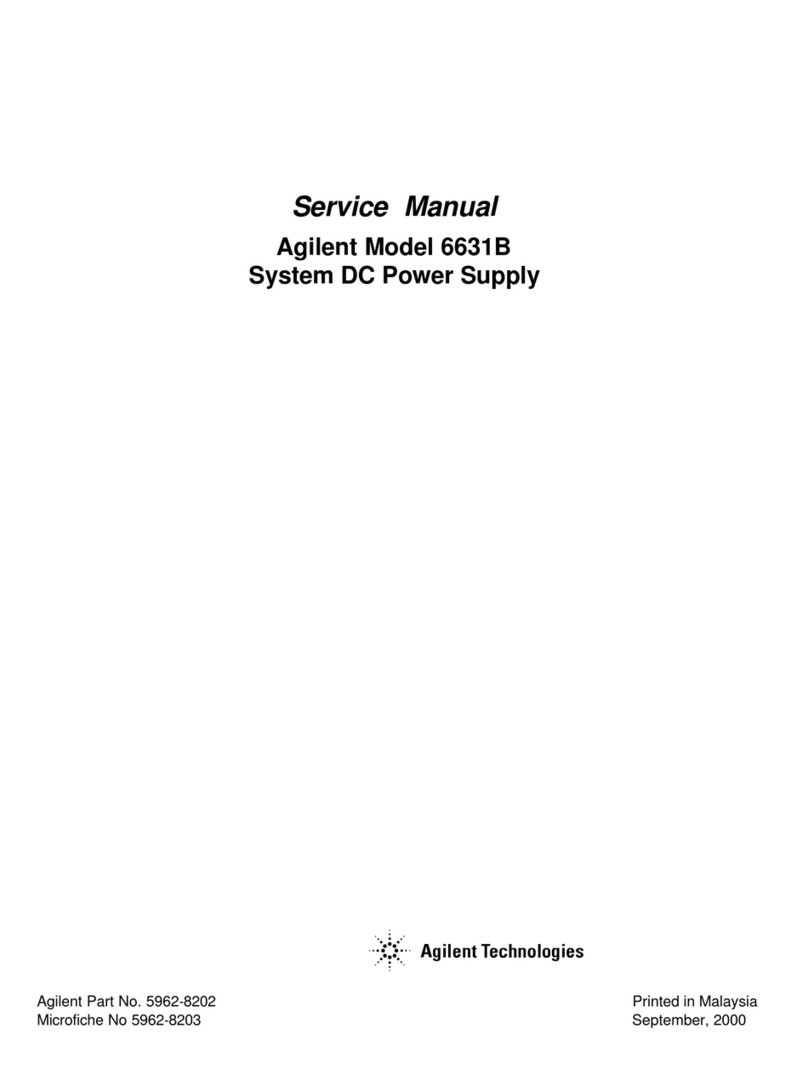
Section 1
Test Instrument Safety
WARNING
Normal use of test equipment exposes you to a certain amount of danger from electrical
shock because testing must sometimes be performed where exposed voltage is present.
An electrical shock causing 10milliamps of current to pass through the heart will stop most
human heartbeats. A Voltage as low as 35 volts dc or ac (rms.) should be considered
dangerous and hazardous since it can produce a lethal current under certain conditions.
Higher voltages pose an even greater threat because such voltage can more easily produce
a lethal current. Your normal work habits should include all accepted practices to prevent
contact with exposed high voltage and to steer current away from your heart in case of
accidental contact with high voltage. You will significantly reduce the risk factor if you know
and observe the following safety precaution.
1. Don’t expose high voltage needlessly. Remove housings and covers only when necessary.
Turn off equipment while making test connections in high voltage circuits. Discharge high
voltage capacitors after removing power.
2. If possible, familiarize yourself with the equipment being tested and the location of its high
voltage points. However, remember that high voltage may appear at unexpected points in
defective equipment.
3. Use an insulated floor material or a large, insulated floor to stand on and an insulated work
surface on which to place equipment and make certain such surfaces are not damp or wet.
4. Use the time proven “one hand in the pocket” technique while handling an instrument probe.
Be particularly careful to avoid contacting a nearby metal object that could provide a good
ground return path.
5. When testing ac powered equipment, remember that ac line voltage is usually present on
some power input circuits such as the on-off switch, fuses, power transformer etc. any time
the equipment is connected to an ac outlet, even if the equipment is turned off.
6. Some equipment with a two-wire ac power cord, including some with polarized power plugs,
is the “hot chassis” type. This includes most recent television receivers and audio equip-
ment. A plastic wooden cabinet insulates the chassis to protect the customer. When the
cabinet is removed for servicing, a serious shock hazard exists if the chassis is touched. Not
only does this present a dangerous shock hazard, but damage to test equipment. Always
connect an isolation transformer between the ac outlet and the equipment under test. To be
on the safe side, treat all two-wire ac equipment as “hot chassis” unless you are sure it is
isolated chassis or an earth ground chassis.
7. On test instruments or any equipment with a 3-wire ac power plug, use only a 3-wire outlet.
This is a safety feature to keep the housing or other exposed elements at earth ground.
8. Aplab products are not authorized for use in any application involving direct contact between
our product and the human body or for use as a critical component in a life support device or
system. Here “direct contact” refers to any connection from or to our equipment via any
cabling or switching means. A “critical component” is any component of a life support device
or system whose failure to perform can be reasonably expected to cause failure of that
device or system or to affect its safety or effectiveness.
Never work all alone. Someone should be nearby to render aid if necessary. Training
in CPR (cardiopulmonary resuscitation) first aid is highly recommended.
1
